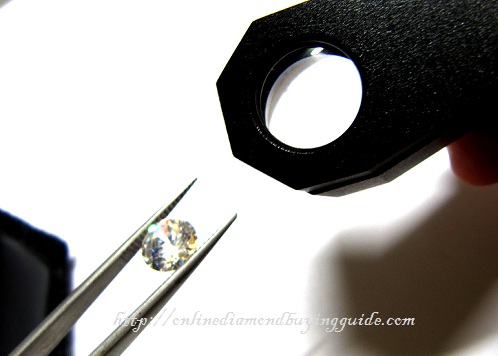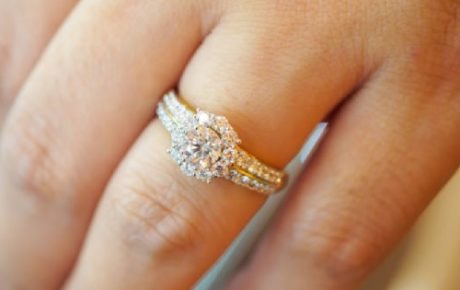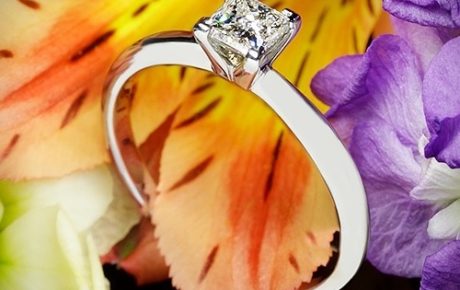Other Clarity Related Articles You Need to Read
Now that you have gone through the essential content about diamond clarity, it should arm you with sufficient knowledge to make rational decisions. For more readings on related topics, check out the list of articles compiled below…

- What Are Clarity Enhanced Diamonds?
Because diamonds are formed deep inside the Earth, they usually contain a number of impurities in them. The purpose of enhancing clarity is to artificially remove inclusions so that the diamond will now look better. While such treatments can improve sale-ability and appeal, it should always be disclosed to the consumer at the point of sale. - How to Use a 10X Loupe For Examining Jewelry
Need help in examining your jewelry? We teach you how to use a 10X magnification loupe with some simple tips and guidelines. You’ll also find recommendations for places to buy a loupe if you need one. - Puzzled About “Surface Graining Is Not Shown” Comment in IF Grades
If the internally flawless grade has meant that the diamond has achieved the highest possible rating, why do you still see comments indicating the presence of flaws in a grading report? This is a common misconception that we will answer here… - EGL’s SI3 Grading – Just How Reliable Is It?
When this controversial grade was introduced by EGL, it created a big hoo-ha and started an ongoing debate about its validity. Jewelers now have a “legitimized” method to market inferior diamonds by having them sound nicer on paper. The reality is that the bulk of SI3 diamonds will actually receive a grade of I1 or worse if they were graded by reliable labs like GIA. In this article, we reveal the truth behind this notorious grading… - Feather Inclusions – What They Really Are
In nature, imperfections and flaws are by-products of a rough diamond’s formation process. A feather inclusion is basically a “crack” within the diamond’s body. Literally, the flaw looks very much like a feather and is caused by a dislocation of the crystalline structure. - Additional Pinpoints Not Shown – What Does it Really Mean?
Have you ever seen this comment in a grading report and wondered what it means? Does it have a negative impact on the appearance of your stone? We help you find answers in this article. - I See a Line Crack Across the Body of the Diamond
When people start to examine their proposal ring closely after owning it for some time, they begin to notice things they had never seen before previously. One common phenomenon that many people misinterpret as a crack is the girdle reflection in the diamond’s body. Are you a victim of your own observations too? - The Phenomenon of Grade Bumping And How to Protect Yourself
Did you know there are some methods that unethical jewelers can use to misrepresent their inventory so that they appear to be of higher quality and sell for more? For the record, I have a personal vendetta against jewelers who do this because I was nearly a victim of such scams before. In this article, I will expose the tricks that jewelers use and show you how to avoid getting conned. - Transparency Issues Caused by Fluorescence or Clarity?
Besides inclusions, did you know that fluorescence can be the cause of hazy/milky appearances? We dig deep into a research paper and study made by GIA to debunk some glaring claims that were made. - Types of Inclusions Found in a Diamond
Check out photographic examples of the various inclusion types here. The next time you go shopping and use a loupe on a diamond, you would have a better understanding of what you are really looking at. - Diamond Cavities – Should You Worry About Them?
Very often, consumers come across a cavity inclusion and get all fussed up over a “hole”. So, what exactly is a cavity? I’m going to reveal things to help you make rational choices instead of making impulsive decisions out of fear. - Cloudy Diamonds – Why Do Diamonds Look Hazy or Milky?
A hazy diamond saps the life and brilliance out of the stone. We reveal the things that cause it and what you need to look out for if you don’t want to end up with a milky diamond. - Diamond Feathers – Are They Cracks, Cleavages And a Problem?
Feathers are cracks within the crystalline structure of the diamond. Under what circumstances would they pose a problem for durability? We look at some close up examples and show you the important points to take note of.
– End –














Leave A Comment